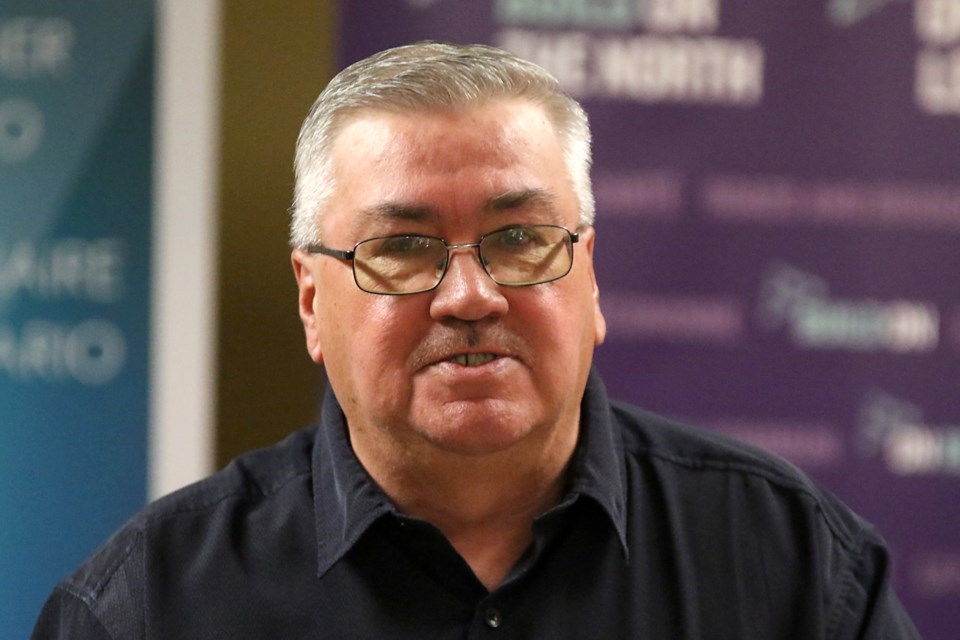WHITESAND FIRST NATION — A massive investment by the federal government means a long-planned biomass heat and power plant in Whitesand First Nation is finally set to become a reality.
The plant will help area communities, including nearby Armstrong, reduce their dependence on diesel, and support new industrial activity, bringing what is estimated to be over a hundred new permanent jobs.
Announcing the funding during a stop in Thunder Bay on Tuesday, Minister of Natural Resources Jonathan Wilkinson said the project’s benefits include helping Canada meet a commitment to achieve a fully net zero electricity system by 2035.
“It’s a project that will be First Nations-led, will create economic and employment benefits, and is actually going to help us in our fight against climate change,” he said.
The investment is in the Whitesand First Nation-owned Sagatay Co-Generation Limited Partnership, which plans to build a 6.5-megawatt cogeneration heat and power facility using locally sourced wood waste.
That will benefit the nearby communities of Armstrong and Collins, as well as Whitesand, connecting to help power the local “micro-grid,” which used the equivalent of over 1.3 million litres of diesel last year.
The facility will also support the energy needs of a new wood pellet plant and a fully electric wood merchandising yard.
The industrial park — to be known as the Bio-Energy Centre — will be located on Highway 527 about one kilometre south of Armstrong.
Whitesand Chief Allan Gustafson said the funding announcement was a big deal for a community he said first began developing the project more than 30 years ago, with progress coming in fits and starts since.
“Whitesand's vision of energy independence and economic growth began in 1992 when we proposed a biomass cogeneration facility,” he said. “Although that proposal was not accepted, and despite the many barriers we have faced through the years, we did not give up and today our vision of a sustainable future through the use of our local forest is at hand."
He estimated the project will create around 40 jobs associated with the mill, and another 80 elsewhere.
The federal funding comes through the $1.6 billion Smart Renewables and Electrification Pathways program. The government previously provided $4.2 million for the project, while NOHFC chipped in with close to $1 million.
In a release, the feds said the investment fits perfectly with its priorities to “cut pollution, create good jobs, and support Indigenous leadership.”
The facility will also help “demonstrate the efficiency and cost-effectiveness of biomass heat and power,” the government said.
David Mackett of the Sagatay partnership agreed the facility could set a template for other communities.
“The Bio-Economy Centre is confirmation of how Canada's low-carbon programs … can lead to substantial economic growth, employment, GHG reduction and forestry expansion,” he said in a statement.
“This project empowers an Indigenous community to enter Canada's and Ontario's economy while demonstrating how carbon reduction can lead to poverty reduction in similar communities across Canada."
The government says the project will reduce the need for diesel in Whitesand, though it no longer claims it will eliminate the use of diesel entirely.
Thunder Bay Chamber of Commerce president Charla Robinson called Tuesday’s announcement a long-sought victory for Whitesand, but added spin-off benefits across the region shouldn’t be overlooked.
“When you’re investing that kind of money into building infrastructure, Thunder Bay is the hub where most of those services and supplies tend to come from, so it will likely be [local] businesses that are doing the construction … and then even servicing it once it’s into operation,” she said.
